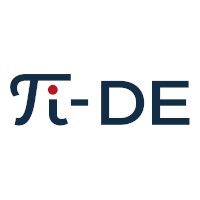B1.2 – Improving the anisotropy of graphene nanoribbons (GNR)
Principle Investigator: Prof. Klaus Meerholz
During the first cohort, graphene nanoribbons (GNRs), synthesized on Au(788), have proven to be versatile templates for the growth of ordered layers of conjugated molecules, e.g. merocyanine and squaraine dyes, with very exciting optoelectronic properties. However, the order in the molecules of interest is limited by the order of the GNR.
The goal of the project in the second cohort is to improve order and reduce disorder and defects. A potentially successful path is the use of different Au crystal facets. By reducing the terrace width, we aim to reduce the number of GNRs per terrace to narrow the angular distribution upon transfer and reduce defect density, enabling more ordered templates. An alternative approach to reduce defect density is tuning the interactions between template (GNR) and templated molecule. We aim to achieve this by using chemically modified GNR precursors. The project is closely interacting with project D2.2.
The project will provide training in the design, modelling, fabrication and characterization of solar cells. There will be opportunities to work with a wide range of tools, including vacuum deposition equipment, modern lithography, spectroscopy, atomic-forme microscopy, and many others.
References
[1] Senkovskiy, B., Nenashev, A., Alavi, S., Falke, Y., Hell, M., Bampoulis, P., Rybkovkiy, D., Usachov, D., Fedorov, A., Chernov, A., Gebhard, F., Meerholz, K., Hertel, D., Arita, M., Okuda, T., Miyamoto, K., Shimada, K., Fischer, F., Michely, T., Baranovskii, S., Lindfors, K., Szkopek, T., Grüneis, A. Tunneling current modulation in atomically precise graphene nanoribbon heterojunctions. Nat. Comm. 12, 2542, doi.org/10.1038/s41467-021-22774-0 (2021).
[2] Senkovskiy, B. V., Pfeiffer, M., Alavi, S. K., Bliesener, A., Zhu, J., Michel, S., Fedorov, A. V., German, R., Hertel, D., Haberer, D., Petaccia, L., Fischer, F. R., Meerholz, K., van Loosdrecht, P. H. M., Lindfors, K. & Gruneis, A. Making Graphene Nanoribbons Photoluminescent. Nano Lett 17, 4029, doi.org/10.1021/acs.nanolett.7b00147 (2017).
[3] Alavi, S.K., Senkovskiy, B., Hertel, D., Haberer, D., Ando, Y., Meerholz, K., Fischer, F., Grüneis, A., Lindfors, K. Photodetection Using Atomically Precise Graphene Nanoribbons. ACS Appl Nano Mat 3 (8), 8343, doi.org/10.1021/acsanm.0c01549 (2020).
The ideal candidate has a training in chemistry, physics, electrical engineering or a related discipline and is already acquainted with organic devices, thin film optics, or UHV vacuum techniques. Curiosity, creativity, dedication and a strong team spirit are however equally important. As the group operates exclusively in English, applications from international candidates are explicitly welcomed; very good command of English language is highly desirable.
